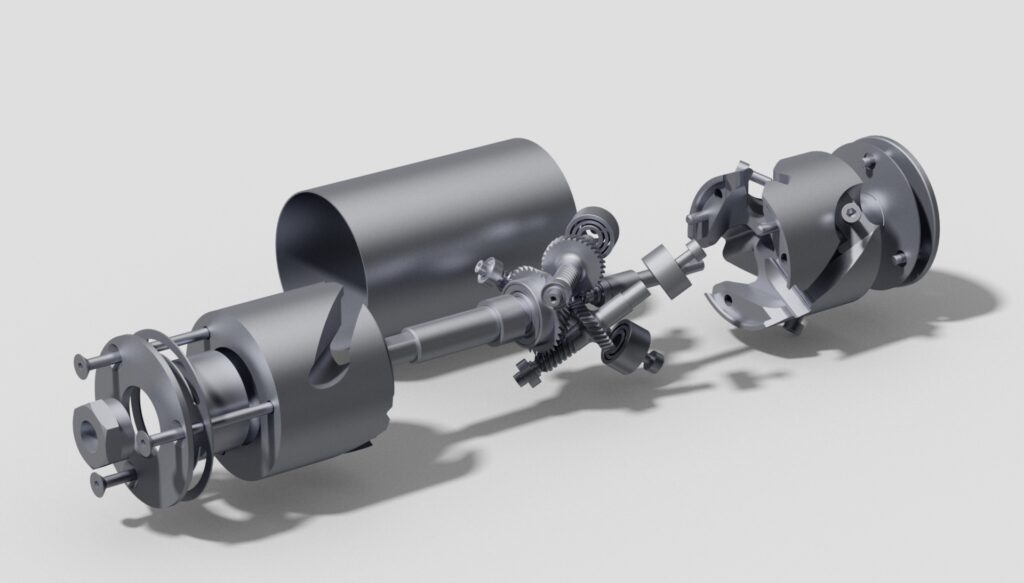The strength of next|gear is,
to do something different from everyone else.
Abstract/Background:
Joint development of a planetary helical gearbox with IMS Gear. It is used in the automotive industry with highly sensitive requirements for smooth running and simultaneous cost pressure.
Advantages:
How was it done:
The tooth flanks are the result of direct conjugation of the ring gear onto the planet. The crowned shape of the planets allows them to be installed in a helical-toothed cylindrical ring gear while at the same time being demoldable from the injection mold. You can find out more in the scientific article.

HypoGear
Background:
In many areas of mechanical engineering and the automotive industry, ever smaller and more powerful drive solutions are required. The main criteria for actuators are load capacity, size, efficiency and acoustic properties. Due to the torque and speed requirements, small drives are often equipped with a reduction gearbox.
What was done:
This first prototype of a two-stage, coaxial gearbox with a triaxial arrangement of the intermediate shafts achieves an overall transmission ratio of i = 1:90. Various series of measurements were carried out and evaluated on the prototype. Among other things, the prototype achieves very good efficiency with regard to the transmission ratio. Investigations into the frequency response of the moving parts allow a clear assignment of shaft and gear stage to noise emissions, so that qualitative and quantitative statements on manufacturing tolerances and influencing factors can be derived.
Importance of the project:
The HypoGear project can be seen as "project zero" of next|gear. Some fundamental algorithms and function blocks of this project-related calculation can still be found in the source code of next|gear today. Several iteration cycles and evolutionary steps later, next|gear was available to the first users.
Background:
Bevel gears for differential gears are often manufactured using the forging process, as this is efficient in production and also offers technical advantages in terms of load capacity. By using a unique variable tooth profile, the geometric features can be designed to fit precisely. So precisely that we can prove the demoldability and the two bevel gears originate directly from a common face gear. This not only ensures power transmission by means of a ball involute, but the tooth root and edges of the bevel gears can also be calculated for optimum stress.
How was it done:
The key is the variable tooth profile in next|gear. This makes it possible to change the tooth profile along the tooth and to design a unique tooth using various interpolation methods. In combination with the face gear calculation, the variable tooth profile is also available for bevel and hypoid gears.
Result:
The final bevel gear pair transfers the advantages of involute gearing with the ball involute to the bevel gears. Forming production (forging) gives us geometric freedom that we can achieve with next|gear.
100 % and thus be able to exploit the technical properties to the full without affecting production costs.